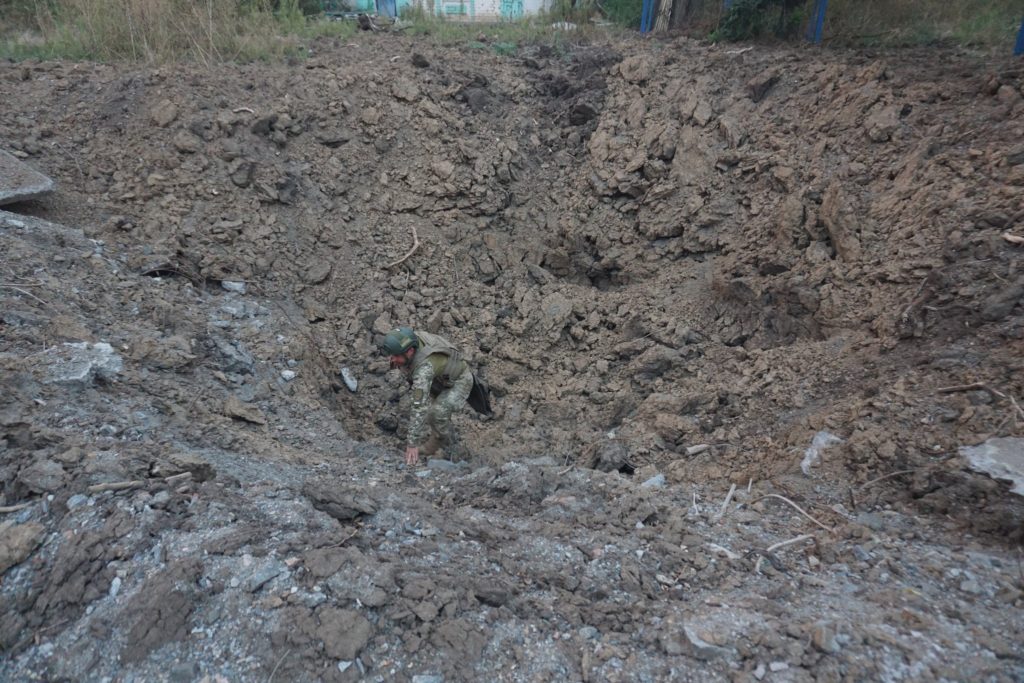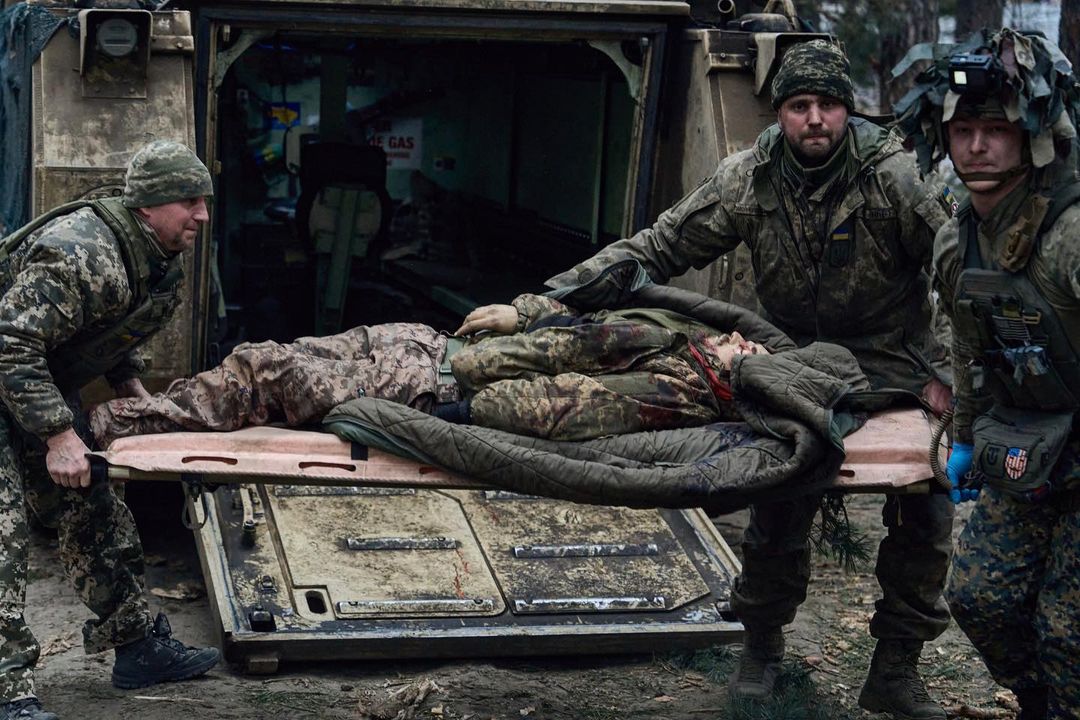Guided aerial bombs have emerged as a key Russian weapon enabling its offensives, particularly - the recent occupation of the east Ukrainian city of Avdiivka, an analysis by Euromaidan Press reveals.
After months of failed ground offensives on the Ukrainian-held city of Avdiivka, Russia unleashed an overwhelming aerial bombardment campaign with guided aerial (gliding) bombs that ultimately led to the city's downfall on 17 February 2024.
The rapid fall of the city, a bastion for Ukrainian defenders since 2014, under guided aerial bombs and amid Ukraine's ammunition shortage is prompting worries that Russia would repeat this tactic elsewhere on the front. It is also spurring calls to boost Ukraine's defenses with advanced missile systems and F-16 jets that would chase Russian bombers beyond the range of the cheap and dirty gliding bombs.
"Russia sent as many as 60 of them a day on Ukrainian positions, in addition to phosphorous bombs and artillery," said Maksym Zhorin, deputy commander of Ukraine's 3rd Assault Brigade, which was deployed to defend the city.
The guided aerial bombs consist of simple high explosives, usually weighing between 250 to 1,500 kg, outfitted with steering wings and flight control modules. Launched from Russian SU-34 jets at high altitudes tens of kilometers from the front lines, they can fly accurately for dozens of kilometers to strike targets.
Russia's assault of Avdiivka has been enabled by their reinforcement of guided aerial bombs, that simply “wipe out the city and positions" of outnumbered Ukrainian troops, acc. do DeepStateMap.
— Euromaidan Press (@EuromaidanPress) February 13, 2024
Here is how Russians strike the Khimiki district as urban fighting rages in… pic.twitter.com/K6jDaZ4bzT
"A 500-kilogram bomb does not care whether it’s sent into a steppe or a concrete city. It collapses apartment buildings like card houses," explained Ihor Lutsenko, a Ukrainian drone developer.
Matching the power of far more expensive tactical missiles, the bombs gave Russia a way to unleash devastating strikes from beyond the range of most Ukrainian air defenses.
The weapons leveraged Russia's massive stockpile of Soviet-era bombs, which had a simple upgrade applied: wings and a flight control module.

According to analyst Oleksandr Kovalenko, Russia launched over 460 guided bombs at the Ukrainian frontline in the first 10 days of February alone. Meanwhile, Ukraine had no guided bombs to use in retaliation.
The nonstop bombardment overwhelmed Ukrainian defenses already depleted of ammunition and artillery, allowing Russian troops to finally advance after identifying weak areas in the flattened cityscape.
Maksym Zhorin said his brigade faced attacks from 100 Russian soldiers for every 6 Ukrainian defenders. The Russians also surprised Ukrainian forces by emerging from an underground pipe to strike from the rear.
With troops cut off and casualties mounting, Ukraine was forced to withdraw rather than stage a bloody last stand.
According to aviation expert Bohdan Dolinets, earlier, Russia had a limited number of kits for converting unguided aircraft bombs into guided bombs, which constrained Russia's use of its nearly limitless Soviet stockpile. So, the Russians increased the production of the relevant kits, and thus, the use of the bombs grew.
The bombs are reliant on the use of the satellite-based GPS navigating system, and its Russian equivalent GLONASS.
Already in December, Russia's use of guided aerial bombs became a real problem for Ukraine, Air Force spokesman Ihnat said.
Guided aerial bombs are "probably [Russia's] most serious and powerful weapon right now," according to aviation expert Kostiantyn Kryvolap. They are carried by SU-34s, covered by Su-35 fighters from above.
While many bombs fail to detonate or miss entirely, those hitting homes and infrastructure cause utter destruction. The soldier describes fields, towns and roads pitted by bomb craters as Russia indiscriminately targets military and civilian sites.

The way Russians use these bombs is an example of an engineering solution with which they adapt to the evolving war, Solonko says:
"They were able to ensure that the aircraft carrying the bombs could avoid flying too close to the contact line. This solves the problem of heavy losses of combat aircraft; they become out of reach of man-portable air defense systems. On the other hand, the bomb's approach time increases, and we have more time to hide, if possible," he explains.
He details how bombardments occur both day and night, sometimes concentrated in response to intelligence obtained by drones. The unpredictable attacks keep soldiers on edge, and make any advances extremely difficult, as the Russians essentially have air superiority.
"We move forward... under constant air strikes, When the targets are located in the steppe, like in the palm of your hand, the surrounding fields are mined, and the narrow corridors for movement are limited and shot at. Each position taken back from the occupiers is something that was done in a situation in which no other army would probably even attempt. I cannot imagine beginning a ground offensive without necessary air assets. But the Ukrainian armed forces are doing it and succeeding" under constant aerial assault, he says.
Trending Now
Ukraine lacks methods to counteract the gliding bombs; Patriots and F-16s could help
Ukraine's lack of long-range air defenses or modern combat aircraft left it unable to counter Russia's guided bomb offensive, which Defense Minister Rustem Umerov cited as a key factor in relinquishing Avdiivka.
Ihor Lutsenko believes Ukraine cannot advance on the front if it does not find a way to counteract the onslaught of Russian cheap powerful gliding bombs. Possible solutions he named include:
- asking Ukraine’s partners for combat aviation capable of chasing away the Russian jets firing guided bombs, such as F-16s;
- destroying Russian airfields where jets carrying the bombs take off;
- having advanced air defense capable of chasing Russian jets away from the frontline;
- creating a Ukrainian version of a guided aerial bomb.
“We will not be able to attack without guided aerial bombs. We cannot use tactical missiles or shells to destroy Russia’s deeply echeloned defense and fortifications. The former are too expensive, the latter too weak. We need something cheap and powerful; we need guided aerial bombs,” he says.
According to Air Force spokesman Yuriy Ihnat, Russian jets launch the guided bombs from 40-50 km beyond the frontlines, staying out of range of most Ukrainian air defenses.
The high altitude and speed of the jets enables the bombs to glide up to 80 km before striking their targets, putting border areas and frontline cities at risk.
Ihnat explained that shooting down the bombs is extremely difficult as the launch aircraft remain beyond the reach of air defenses like Ukraine's S-300 and Buk-M1 systems. Placing air defenses closer to the front also risks making them priority targets for Russian strikes.
"To counter such Russian attacks, Ukraine needs modern air defense like Patriot and SAMP-T systems, and Western aircraft like F-16s," Ihnat explained.

The potency of Patriot in the battle against gliding bombs was likely demonstrated on 19 February, when Ukraine reported downing a Su-34 fighter-bomber, a guided aerial bomb carrier, and a Su-35S fighter that accompanied it.
Two days before, Ukraine reported downing three Russian aircraft - two Russian Su-34 bombers and one Su-35 fighter - at a distance of 70-120 km from the front line, outside the range of most Ukrainian air defense systems. However, they were reachable for the US-made Patriot, with its range of 160km.
As well, the delivery of F-16 fighter jets to Ukraine's Air Force could significantly curb Russia's use of guided bombs and long-range missiles against Ukrainian targets.
Equipped with advanced AIM-120 air-to-air missiles with ranges up to 180km, F-16s would be able to destroy Russian aircraft before they even enter Ukrainian airspace to launch guided munitions, according to military expert Oleksandr Kovalenko.
Supported by NATO AWACS radar planes already patrolling nearby, F-16s could intercept Russian bombers across Kherson Oblast and over Crimea.
While Russia has some long-range air-to-air missiles as well, experts note they remain dependent on radar tracking support from similar AWACS planes that would be unwilling to venture too far west, fearing the possibility of being shot down.
Overall, F-16s are expected to push back Russian aviation and limit guided bomb strikes, especially over western regions of the frontline, though their impact may be constrained near intense fighting in the east, Kovalenko says.
However, any counteraction to Russia's guided aerial bombs requires a concerted approach, according to Kostiantyn Kryvolap. Long-range missiles such as ATACMS are needed to destroy Russia's main radar systems and air defense launchers along the frontline. Without them, it will be hard for the F-16s to be effective in battle, he says.
As well, Kryvolap explains that to operate in contested airspace, Ukraine's F-16s need "analogous armament" to Russia's most modern aircraft. This includes advanced radars found in the newest F-16 variants far superior to radars in older models Ukraine may receive. Ukraine's defenselessness against the scourge of gliding air bombs means that Russia could replicate this tactic along other sectors of the front, according to the US-based Institute for Study of War.

The think tank notes that Russia managed to occupy Avdiivka thanks to temporary localized air superiority, enabling them to provide ground troops with close air support during the last days of the battle for Avdiivka -- likely a first for Russian forces in Ukraine.
"The recent mass use of glide bombs in Avdiivka is the first time that Russian aviation has used these bombs at scale to provide close air support to advancing infantry troops," ISW noted.
The up to 500 guided bomb strikes over Avdiivka faced no apparent interference from Ukrainian air defenses.
ISW warns such tactics could be replicated along the front without more Western air defense aid. They note Ukraine faces dwindling air defense missile stockpiles, forcing hard choices on where resources are allocated.
If the lack of air defenses persists, ISW assesses Russia may gain broader localized or intermittent air superiority that would allow deep strikes on cities far beyond the front with impunity. Even temporary control of Ukrainian skies was sufficient to turn the tide in Avdiivka.
- Read more in our analysis: Why Avdiivka fell to Russia





